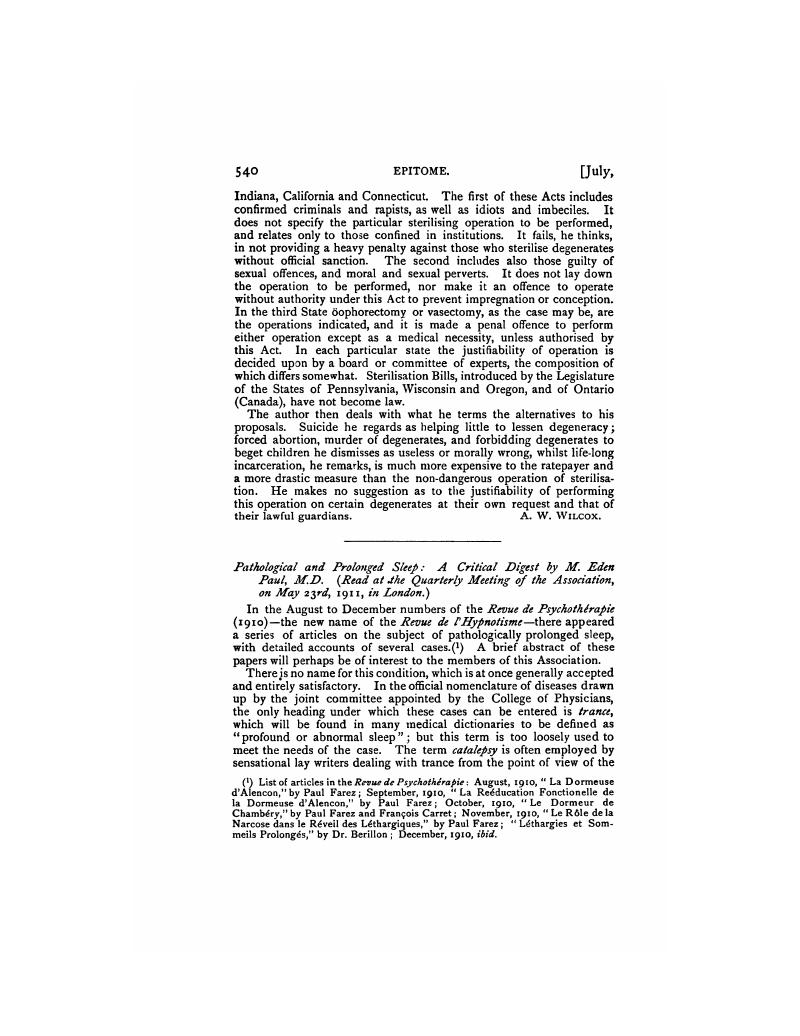No CrossRef data available.
Article contents
Pathological and Prolonged Sleep: A Critical Digest by M. Eden Paul, M.D. (Read at the Quarterly Meeting of the Association, on May 23rd, 1911, in London)
Published online by Cambridge University Press: 19 February 2018
Abstract

- Type
- Epitome of Current Literature
- Information
- Copyright
- Copyright © Royal College of Psychiatrists, 1911
References
page 540 note (1) List of articles in the Revue de Psychothérapie: August, 1910, “La Dormeuse d'Alencon,” by Paul Farez; September, 1910, “La Reéducation Fonctionelle de la Dormeuse d'Alencon,” by Paul Farez; October, 1910, “Le Dormeur de Chambéry,” by Paul Farez and François Carret; November, 1910, “Le Rôle de la Narcose dans le Réveil des Léthargiques,” by Paul Farez; “Léthargies et Sommeils Prolongés,” by Dr. Berillon; December, 1910, ibid. Google Scholar
page 543 note (1) Charcot and his followers (the “Salpétrière school” of hypnotism), divided, it will be remembered, the hypnotic state, or rather the state of “great hypnotism,” into three stages or phases, via., lethargy, catalepsy, and somnambulism. Liébeault, Bernheim and others of the “Nancy school” of hypnotism deny the natural existence of these stages, and, indeed, the natural existence of Charcot's grande hypnotisme at all, except in aggravatedly hysterical subjects—and in these the symptoms described were considered to be the result simply of suggestion. The Salpétrière patients had come to learn what was expected of them, and, consciously or unconsciously, followed the prescribed cues. Associated with this controversy was another, whether the hypnotic state is a pathological condition which can be induced only in hysterical subjects—an induced neurosis, in fact—or whether it is a condition to which the enormous majority of, if not all, normal persons are susceptible. The controversy raged for many years, but it must now be considered to be decided mainly in favour of the views of the observers of the Nancy school. But this does not invalidate the truth of the resemblance pointed out by Berillon between the condition of the sleeper of Thenelles and the induced lethargy observed by Charcot in his grande hystériques at the Salpérière. The significance of this resemblance will be considered later.Google Scholar
page 544 note (1) The above comment was penned before I had read Dr. Farez's account of the sleeper of Alençon (vide infra), in which he mentions that the awakening in such cases is often determined by some form of intoxication, and that in the sleeper of Thenelles the awakening and the fatal issue were due to pulmonary tuberculosis.— M.E.P.Google Scholar



eLetters
No eLetters have been published for this article.